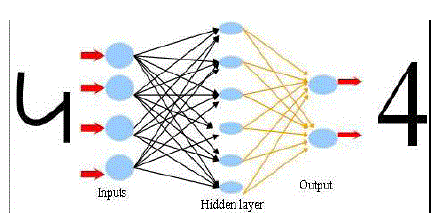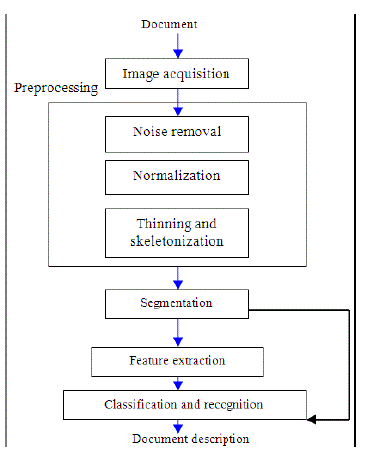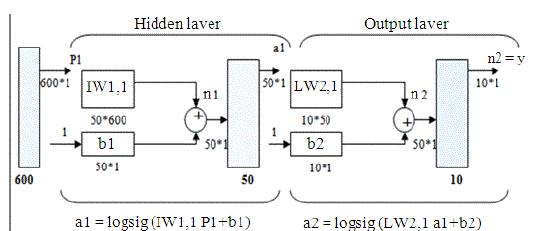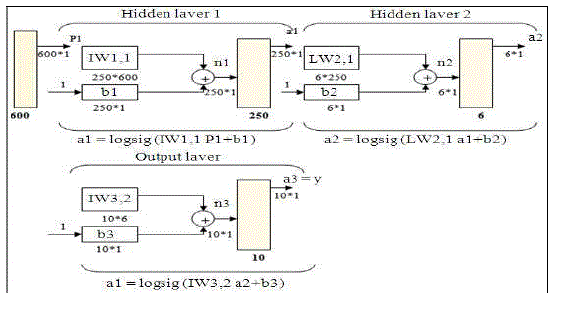ISSN ONLINE(2319-8753)PRINT(2347-6710)
ISSN ONLINE(2319-8753)PRINT(2347-6710)
M.Dharani1, Dr. (Mrs) VasanthaKalyani David 2
|
| Related article at Pubmed, Scholar Google |
Visit for more related articles at International Journal of Innovative Research in Science, Engineering and Technology
Handwriting number recognition is a challenging problem researchers had been research into this area for so long especially in the recent years. In our study there are many fields concern with numbers, for example, checks in banks or recognizing numbers in car plates, the subject of digit recognition appears. A system for recognizing isolated digits may be as an approach for dealing with such application. In other words, to let the computer understand the numbers that is written manually by users and views them according to the computer process. Scientists and engineers with interests in image processing and pattern recognition have developed various approaches to deal with handwriting number recognition problems such as, minimum distance, decision tree and statistics.
Keywords |
| Neural network, ANN, segmentation, digital recognition, feed forward back propagation Algorithm |
INTRODUCTION |
| Recently, a lot of works was done by depending on the computer; In order to let the processing time to be reduced and to provide more results that are accurate, for example, depending on different types of data, such as characters and digits and the numbers are used frequently in normal life operation. In order to automate systems that deal with numbers such as postal code, banking account numbers and numbers on car plates. And an automatic recognition number system is proposed in this study.Digit recognition has been extremely found and studied. Various approaches in image processing and pattern recognition have been developed by scientists and engineers to solve this problem[1,16]. That is because it has an importance in several fields and it may probably be used in checks in banks or for recognizing numbers in cars plates, or many other application.In this study, system for recognized of digits is built, which may benefit various fields, the system concerning on isolated digits, the input is considered to be an image of specific size and format, the image is processed and then recognized to result of an edited digits.The proposed system recognizes isolated Arabic digits as the system acquire an image consisting digits,then, the image will be processed into several phases such as image enhancement, thinning, skeletonaization and segmentation before recognizing the digit. A multilayer neural network will be used for the recognition phase; a feed forward back propagation algorithm will be applied for training the network and finally change them into numeral text[2]. |
| Related work: Pattern recognition is an area of study that is well-established and known through years of research, especially in the field of digit recognition which is considered one of the obvious challenges and one of the significant contributors to digit recognition.However, Arabic digits recognition is considered the recent major areas that attract researcher's attention. Digits recognition attracts researchers into mainly two areas; first, a ierarchical division of the input letter space to easily solve the problem. Second, a heuristically defined rule for classification or feature selection, which is depend on both the writer and the written material (data). |
| Experiments were done by Jurgen Frank for the polynomial classifier approach. There are three classifiers; the first one is simple and linear. It was efficiently built and successfully tested for the purpose of obtaining a reference point for different data set.Accordingly, the performance is improved by depending on several sophisticated polynomial structures. The second classifier comprises the effects of extracting the feature which are demonstrated with the Karhunce-loeve transformation and some results iterative learning were mentioned to be provided. The third classifier comprises the fixed classifier approach for various structure kinds of the classifier system on the same data set. As a result, the performance effects were demonstrated, the efforts and supporting of these different systems in the training and testing stage are shown in[3]. Alceu de Britto et al.[4] proposed an approach for recognizing the handwritten numeral strings that relies on the twostage HMM-based method. The possible loss of recognition performance is returned by the method that is caused by the necessary trade-off between recognition and segmentation in an implicit segmentation-based strategy. In the first phase of the segmentation process, implicit segmentation process concerns contextual information in the sense of providing multiple segmentation-recognition |
| hypotheses for a mentioned preprocessed string is taken. In the second phase, these hypotheses are reranked and verified in a by performing an isolation for the digit classifier. An experiment on 12,802 handwritten numeral strings of different lengths has been conducted to proof that the dependence of the two-stage recognition strategy is a promising approach.An average improvement of 9.9% was for the verification stage on the string recognition rate. |
| A recognition rate of 89.6% on touching digit pairs was obtained by this method.Genetic programming techniques for hand written digits recognition was applied by[15] on the USPS data set. Some variations appears on the selection and evolution methods which normally used accompanied by genetic programming systems such as aged members, directed crossover, inter-output crossover and node mutation. This genetic approach shows a promising result where the accuracy rate reaches 84.3% using interoutput crossover using 19 features.An approach to recognize a bank cheque amount that is manually typed on a bank cheque was proposed by[5]. Several splitting algorithms that achieve a better segmentation for the individual digits where obtained.As a result, a designation for the system was done in order to have the most likely one first; if it fails, it usesdifferent techniques. By using the neural network architecture which employs a group of four neural networks of various types that are applicable in parallel to reduce the chances of incorrect readings, the digits classified. The data used for training the neural network consists of 3103 real cheques and 1444 segments for accuracy. The overall accuracy using MLP neural network was about 85%. |
| An Optical Character Recognition (OCR) framework was developed by[6]. It depends on the handprinted numeric recognition field. From the VISA credit card application forms, the numeric fields were taken from binary images. Individual identity telephone numbers and other numbers were contained in the image. The proposed OCR framework is considered to be as a cascaded neural network. It contains three stages; the first stage is the self-organizing feature map algorithm. The second stage maps distance values to the values of allograph membership by using a gradient descent learning algorithm. The third stage is a network of multi-layer feed-forward. Experiments were efficiently performed on a test data set from the CCL/ITRI database which contains above 90,390 handwritten numeric digits. A test recognition rate of 98.85% was achieved by this experiment. Ernst Kussul and Tatiana Baidyk[7] have efficiently developed a novel neural classifier Limited Receptive Area (LIRA). The classifier LIRA is contained of three neuron layers: output, sensor and associative layers. The classifier was tested over two image databases. The first database is the MNIST database which contained 60,000 handwritten digit images for the classifier training and 10,000 handwritten digit images for the classifier testing. The second database has 441 images of the assembly micro device. For dividing the database a random procedure was used to test and train subsets. The classifier LIRA provides error rate of 0.61% as a mean value of three trials. |
 |
 |
| A finally approach was presented by WESTALL in order to use the neural networks in the system of the decision logic for the handwritten numerals segmentation. This approach has been successfully implemented in a commercial system that is internationally used in the recognition of hand written amounts on personal bank checks; computer-based recognition of unconstrained hand written fields within scanned images of financial documents has three steps. The first step is the field identification that supplies the location within the image of the typically rectangular region of interest that consists of the target field. The second step, an identification must be performed by the segmentation of the group of pixels compressing each numeral of the field. The third step is to classify the numerals that are extracted by segmentation. Fig |
 |
MATERIALS AND METHODS |
| There are four steps to build the isolated digits recognition system. These steps are presented on Fig. 3 and below are the descriptions of them: |
| Image acquisition: We will acquire an image to our system as an input .this image should have a specific format, for example, bmp format and with a determined size such as 3020 pixels. This image can be acquired through the scanner or, digital camera or other digital input devices[9]. |
| Preprocessing: After acquiring the image, it will be processed through sequence of preprocessing steps to be ready for the next step. |
| Noise removal: reducing noise in an image. For on-line there is no noise to eliminate so no need for the noise removal. In off-line mode, the noise may come from the writing style or from the optical device captures the image[10]. |
| Normalization-scaling: standardize the font size within the image. This problem appears clearly in handwritten text, because the font size is not restricted when using handwriting. |
| Thinning and skeletonization: Representing the shape of the object in a relatively smaller number of pixels[9].Thinning algorithms can be parallel or sequential. Parallel is applied on all pixels simultaneously. Sequential examine pixels and transform them depending on the preceding processed results. |
| Segmentation: Since the data are isolated, no need for segmentation. With regards to the isolated digits, to apply vertical segmentation on the image containing more than digit will isolate each digit alone. |
| Normalization scaling and translation: Handwriting produces variability in size of written digits. This leads to the need of scaling the digits size within the image to a standard size, as this may lead to better recognition accuracy. We tried to normalize the size of digit within the image and also translate it to a specific position by the following. |
| Feature extraction: Feature extraction is not part of this project. Feature types are categorized as follows: Structural features: It describes geometrical and topological characteristics of a pattern by representing its global and local properties Statistical features: Statistical features are derived from the statistical distribution of pixels and describe the characteristic measurements of the pattern Global transformation: Global transformation technique transforms the pixel representation to a more compact form. This reduces the dimensionality of the feature vector and providesfeature invariants to global deformation like translation, dilation and rotation |
| Classification and recognition: Neural Network is a network of non-linear system that may be characterized according to a particular network topology. Where, thistopology is determined by the characteristics of the neurons and the learning methodology. The most popular architecture Of Neural Networks used in Arabic digits recognition takes a network with three layers. These are: Input layer, hidden layer and output layer. The number of nodes in the input layer differs according to the feature vector’s dimensionality of the segment image size. |
 |
 |
DISCUSSION |
| To analyse the efficiency of proposed method several experiment are yet to be conducted. Scientists and researchers are still interested in this area, because it has many challenges until now ,and the system involves a verity of process operate sequentially to achieve the goal, many issues related to those process have not been touched, as the needed in the future those issues can be studied and tested under the proposed system and some of the following can be consider as the base for the future work, like check robustness in noisy setting and with different random initializations and skew detection and correction to the digits. |
CONCLUSION |
| Several experiment were conducted that neural network seems to be better than other technique used for recognition. |
References |
|